- Umang Sagar
- Place, Recent article
The Sonagachi: An Attempt To Understand The Appalling

Introduction
Bronze statues found during archaeological excavations in the Indus Valley Civilization in 3000 B.C. provide evidence of prostitution in ancient India. In a sensuous pose, the statue resembles a bare-chested woman with a necklace of jewels. Researchers have drawn a woman from the group of Devadasis, who were temple dancers, a prominent tradition in the Middle East today, as depicted in the painting. Despite this, historians and scholars disagree about the mysterious disappearance of the Indus Valley Civilization, which left no written records of its people’s daily lives and whose mysterious end is still being debated today.
The Devadasi System in Hindu society, on the other hand, played a number of significant roles, from performing religious duties in temples as priestesses to portraying themselves as divine prostitutes. The strange part remains that prostitution despite being a crime in India, is witnessing strong numbers of female children, women brought forcefully or by the consequences of extreme poverty, are sent to the business of buying and selling living bodies. Near the intersection of Jatindra Mohan Avenue (north of C.R. Avenue), Beadon Street, and Sovabazar, Sonagachi is a neighborhood in Kolkata, India, roughly one kilometer north of Marble Palace. Sonagachi is Asia’s largest red-light district, home to more than 50,000 prostitutes in more than a hundred multi-story brothels.
Each sex worker here is having a different narration to present towards their own lives and how were they pushed in the business of ‘prostitution’ which allegedly, no one pursues as a hobby in a society of India driven by deep ethical and cultural values.
How Sonagachi Became Asia's Largest Operational Brothel

The region was once home to a notorious Muslim dacoit named Sanaullah, who lived here with his mother in the early days of the city. “Mother, don’t cry,” a voice from their hut is believed to have urged to the mourning mother after he died. “I’ve turned into a Gazi,” he said, and the legend of “Sona Gazi” began. Thousands of people gathered to the hut to be healed of various ailments or to pray for a better life. According to Nair, Sanaullah’s mother erected a magnificent and elegant mosque in remembrance of her son, which became known as the Sona Gazi mosque. Unfortunately, upon her death, the mosque fell out of favour and eventually vanished. This mosque was the inspiration for Masjid Bari Street, while Sanaullah Gazi became Sonagachi.
Originally, the Arabic word gazi or ghazi simply meant warrior. However, after the Prophet’s birth and the expansion of Islam, it was specifically used to refer to a religious warrior who assisted in the propagation of Islam. Poor Muslim households would plead to these warrior saints, generally against a zamindar or a local chief who was harassing them, according to stories in Volume II of Sir Jadunath Sirkar’s History of Bengal. The gazi would next invade the offending chieftain’s area and, if successful, force him to convert to Islam or promise that his Muslim subjects would not be mistreated. The transition of a dacoit into a warrior saint in the example of Sanaullah Ghazi may appear unusual, yet it is far from unusual. Many Hindu dacoits in Bengal are reported to have worshipped the Goddess Kali, and some “Dakatey Kali” temples still exist today, even in Kolkata.
Unfortunately, Sonagachi’s early history is little known. There’s no way of knowing exactly when or how it became a red-light district. Gautam Basu Mullick, a journalist who has spent more than three decades researching and writing about the city, believes that a collection of factors inevitably leads to an increase in prostitution. Sonagachi is located on Rabindra Sarani, a historic pilgrim trail. Chitpur is also surrounded by several major markets; thanks to the Portuguese, Armenians, and others, companies existed here even before the British arrived. Any place that attracts a big number of pilgrims or tourists, or is a major economic center, according to Mullick, is bound to have a red-light district on its outskirts.
Sonagachi’s brothels were once said to be owned by notable Bengali families. Women today peer out from the balconies of run-down homes with names like “Prem Kutir.” Sonagachi’s small, rat-infested passageways are now home to 11,000 sex workers. Sanaullah Ghazi’s dargah has survived, however, like many other mosques and temples in the city, it has been subjected to arbitrary “renovation.” It is easy to notice from Durga Charan Mitra Street, just a few meters from the Rabindra Sarani crossing. The Prophet, his daughter Fatimah, her husband Ali, and their two sons Hassan and Husayn are all listed on a tablet on the dargah’s external wall. These five names make up the Panjtan, the most prominent figures in Shia Islam, indicating that this is a Shia shrine. Unfortunately, there is no record of Sanaullah’s death year. Despite its location in the heart of a red-light area, near the municipal abattoir, the dargah remains active surrounded by some commercially-active brothels as well.
Experiences Of Abuse And Trafficking
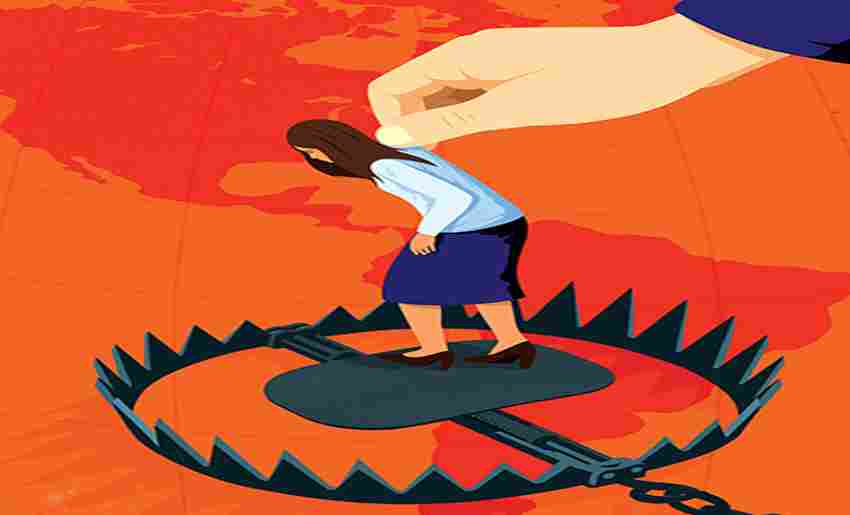
Sex work has long been associated with violence and exploitation. While there is violence in the sex industry, the provision of sexual services for money does not constitute violence in and of itself, according to the social movement for sex workers’ rights. The call for sex work decriminalization entails the repeal of all laws prohibiting consensual adult sex employment. This includes soliciting, renting premises, ‘brothel keeping,’ and living off the revenues of sex work, as well as selling and buying or organizing sexual services. It does not imply that laws against exploitation, trafficking, or violence against sex workers be repealed.
Sex workers are classified as “victims” under the law to help students comprehend the judicial procedures. When authorities raid a brothel, lodge, or detain people who seek sex workers, the women are rescued and brought before a judge, after which they are placed in protective custody in reception centers and/or state homes. They will remain at this facility until their release is ordered or they are claimed by family. The incarceration is indefinite, and obtaining independent release is difficult.
It has been my experience in the context of shelters and the city of Kolkata (near Sonagachi Area) that shelter homes frequently function as prison cells for women. The Immoral Traffic (Prevention) Act of 1956 formalizes sex workers’ shelters and residences. A ‘corrective institution’ is defined and distinguished from a ‘protective home’ under the statute. However, the Department of Women and Child Development operates residential facilities in the guise of deception centers’ and/or statehouses,’ which do not distinguish between a ‘corrective institution’ and a ‘protective home’ in terms of operation. Women are held, with no right to leave the facility and no information about the conditions of their release.
“Malini (name changed) was detained in the state home for six months. She was first detained by the police in the station after a raid and subsequently is placed under protective custody. She had a minor child, aged 5 years, who had been left uncared for and her family did not know her location. The State Home refused to her lawyers either see her or allow her to sign a Vakalath (Memorandum of Appearance). Malini has no family other than her minor child. Her lawyers were forced to file a grievance with the court, arguing that every individual under the Constitution is granted the right to legal counsel and that the court must direct
the State Home to allow lawyers to meet Malini. She was finally released and struggled for over 4 days to locate her child.”
The question isn’t just concerning itself providing adequate legal representation to the ones in need but also if Human Rights come and stand in between Humanity and the life of a prostitute. In the words of Nelson Mandela “For to be free is not merely to cast off one’s chains, but to live in a way that respects and enhances the freedom of others”. In India, according to the data released by UNODC titled “Global Report on Trafficking in Persons”, it has been held that every hour, 2 new female children are pushed into the confines of body slavery. Out of four female children, three of them are coerced or fooled by their family and friends before they are sent to these shelter homes which allegedly, run prostitution centers. Relying on some more data, the Indian Government’s National Crime Record Bureau (NCRB) collects data and presents the number of trafficking cases on the basis of this definition of 370. According to data, 95% of trafficked persons in India are forced into prostitution. The recent NCRB lists a total of 6,616 human trafficking cases as registered in India, out of which trafficking for the sex trade is the highest in numbers. These numbers are not just appalling but also heart-wrenching.
How Did Sonagachi Became Asia's Largest Hub For Prostitutes
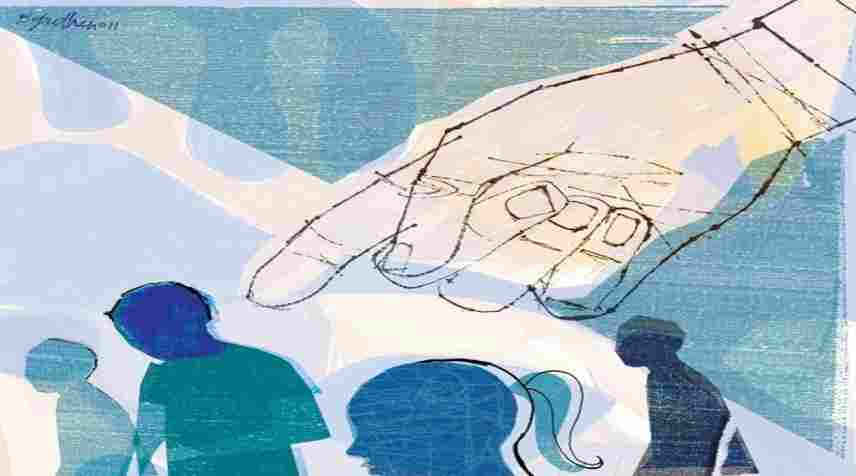
From the early part of the nineteenth century, a massive organized prostitution region centered on Sonagachhi grew up around Cornwallis Street on the east and Chitpur on the west. Although prostitutes lived in numerous parts of Calcutta, they also lived outside of such regions. There were many Britishers who used to like involving in sex practices with Indian women over some monetary consideration. The Indian population was hungry and extremely exploited during the British Raj as a result of which, Kolkata (the then, capital of India) was seen as a growing commercial hub in British India. Women children with no siblings and brothers used to pursue a dream career in Kolkata and were kicked out of their own houses in lieu of the fact that their fathers had very scarce resources to feed them. These children on reaching Kolkata were kidnapped and pushed into the profession of body slavery to satisfy the British employees. The rise of Sonagachi is also attributed to the location of this district in Kolkata which was always believed to be less policed under the British Raj since the people here, were extremely poor and greedy to adopt any profession that treats them in monetary values. Many poor people used to rent their houses to prostitutes and their customers on an hourly basis and naturally, the idea brought magical wonders for the people with no job and expecting a steady income. Although not much of how Sonagachi became the hub of prostitutes in Kolkata is known, it is believed that the idea of renting houses on hourly bases was adopted by many residents of this district which eventually, attracted more and more prospective prostitutes as well as British Employees or Zamindars with too much cash to quench their bodily thirst.
Many ladies from various socioeconomic levels of Hindu-Muslim-Christian populations were engaged in this profession in the Kalighat to Khidirpur dock areas in the south, Kalinga-Fenwick Bazar in the middle-Calcutta, and Kareya area in the far south. Furthermore, there was no ‘clear mark’ or ‘boundary-line’ separating the ‘gentleman zones’ from the ‘prostitutes areas.’ Many locations had a mixture of those two types of population. Rather, many locations could be classified as ‘half-gentleman’ neighborhoods, where normal gentleman’s families co-existed with various types of prostitutes. The British colonial authorities, Christian missionaries, and native English-speaking educated ‘Victorian’ Indian gentlemen began a campaign against prostitutes in the mid-nineteenth century. This was their contribution to the social sanitation initiative aimed at establishing the so-called ‘gentle society.’
Why No Ban On Sonagachi And If Governmental Organizations Are Trying To Make This District A Better Place?
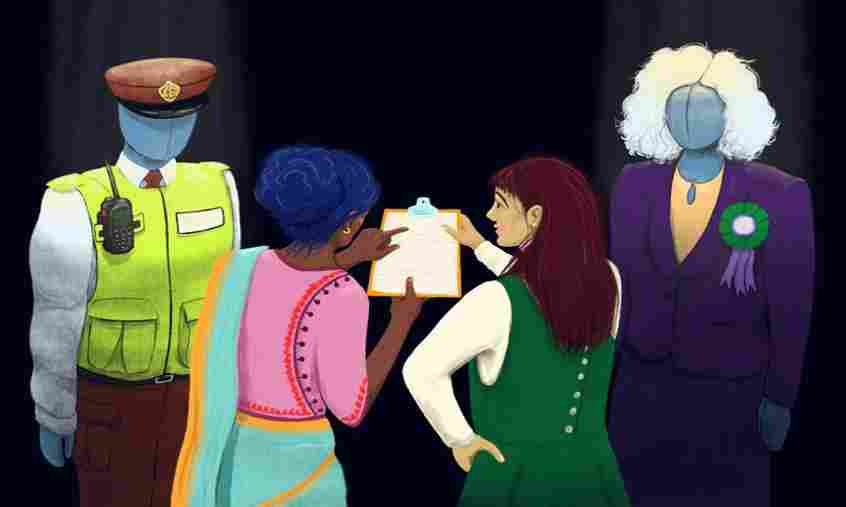
In India, prostitution is prohibited, but prostitutes are not, and this is legally correct. The practice of Prostitution puts a blanket ban on this profession throughout the territory of India. However, the accused prostitute and her customer(s) are often released from prison with a lack of evidence to present in a court of law. There must be proof of “solicitation” and “payment” to convince the jury upon the detention of two adult individuals who are likely to prove otherwise, happening of ‘consensual sex’. In short, it’s just two consenting adults. Minors are sent to their homes for rehabilitation, but such girls and children are not accepted by society. They are exploited and treated unfairly. They usually wind up in brothels again because they have nowhere else to go. Moreover, 95% of the arrests never are presented before a court of law since the police officers are equally greedy and corrupt to grant a release with some monetary consideration in return.
Another reason why this profession is still endorsed by the West Bengal Government is the fact that this is possibly the world’s oldest profession and has been serving as a source of massive revenue stream for the Government. Sonagachi is known to people not just in India, but even in other neighboring countries, and given its popularity and a source of revenue for the Government, a blanket ban is unknown. Since there is a market for commercial sex slavery; it will not cease to function.
Government Initiatives For Workers In Brothels
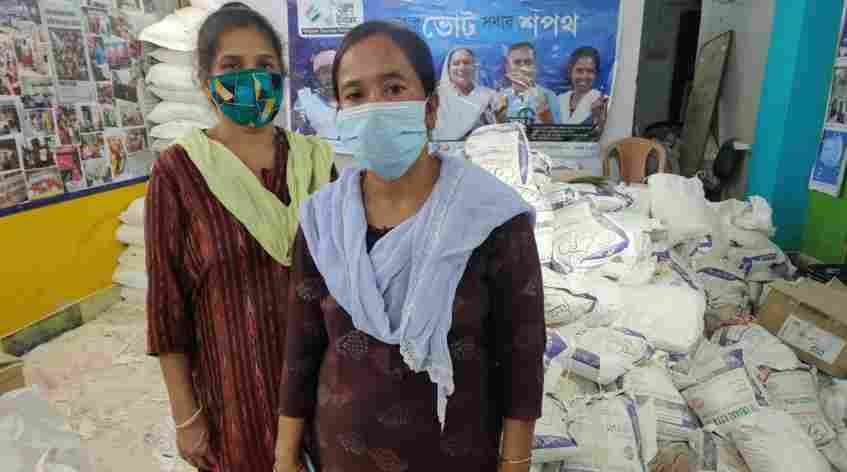
1. To Improve Health Conditions:-
Girls who have been trafficked in the business have little or no autonomy with their clients, the clients treat the sex workers however they want to, wearing a condom or not is the client’s choice, not the other way around. Whatever heinous act they do to the sex workers, there is nothing a sex worker can do except bear the pain of it all. Many girls suffer from severe UTIs or sex workers get STDs and even HIV. There is a rapid spread of HIV in the sex industry of Mumbai. They sell their bodies as sexual tools each day, for food and to feed their children and on top of it, they get exploited. Launched in 1992 by the All India Institute of Hygiene and Public Health, the Sonagachi Project began as a small health promotion project to inform sex workers in Kolkata (Calcutta), India about AIDS as well as to promote condom use and sexually transmitted infection (STI) testing in this community. The mobilization effort, which was conducted in Sonagachi red-light district, has evolved into a multi-faceted community effort to empower sex workers (particularly women) in ways that go beyond HIV prevention. The project, which is a collaboration between government, non-government, and community-based organizations, works in over 40 areas throughout the state of West Bengal to address a community of around 60,000 male, female, and transgender sex workers based in brothels, streets, and hotels.
2. To Facilitate Financial Aid:-
The West Bengal Government has aimed to secure financial aid programmes for full-time prostitutes working in Sonagachi, in lieu of the economic recession brought forth by the Covid-19 pandemic. This project aimed to provide Rupees Five Thousand monthly to all prostitutes to quit the body trade business they’ve been in. Additionally, the West Bengal government has now come up with a feasible alternative that involves focussing on training for women interested in acting, dancing and singing to give them a shot at making a career in films or daily soaps advertising industry. The girls are also being given English lessons to broaden their chances of creating a new life for themselves. The Government stated that the concerned department has already spoken to many film and serial producers to ensure that the trained women get employed.
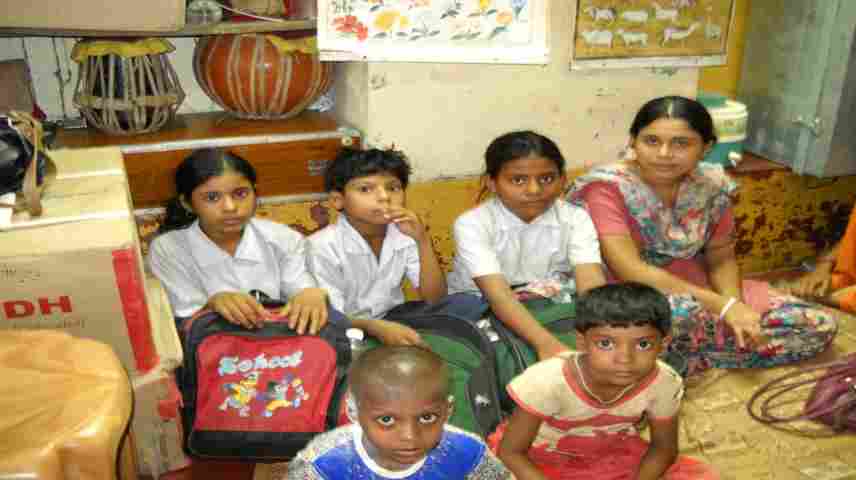
3. Education:-
Durbar Mahila Samanwaya Committee (DMSC) have taken a number of steps to improve sex workers’ and their children’s education. Adult literacy and numeracy programmes for sex workers, primary schools for sex workers’ young children, a residential dormitory with private tuition for older children, and a co-operative banking system are among the services provided. Many sex workers in Sonagachi in the early 1990s had not completed their official education as children. Society’s stigma, prejudice, and violence served as a barrier to accessing adult education services, preventing children of sex workers from enrolling in or continuing their education beyond primary school. Sonagachi’s education programmes began in 1992 when sex workers organised and recruited peer educators. They rapidly discovered that many of the peer educators couldn’t read or write, so a literacy programme was established. This was the area’s first informal education effort led by sex workers. “Why not our children, too?” sex workers wondered as their literacy and education improved. As a result, they established a primary school for students in grades one to three.
The youngsters were able to enter mainstream formal education schools after level three. In 1998, sex workers expanded on this initiative by building a dormitory outside of the red light district for sex workers’ children to reside full-time while attending regular schools. The hostel offered personalized tutoring to assist students in staying on track in school. It also offered computer classes, singing, dancing, and music lessons, as well as sports, including football and volleyball. The sex workers’ children’s football team has had a lot of success and has competed in tournaments all throughout India as well as other countries in Europe and Asia. They recently performed in Denmark. Every year, more than 30 students from the dormitory and the Sonagachi neighborhood receive their high school diplomas. Students can also stay at the hostel after graduating from high school. One student recently graduated from university with a degree in engineering and moved out to start a new job. DMSC has a ‘cultural wing’ called ‘Komal Gandhar,’ which involves the offspring of sex workers and has had considerable success performing across India, as well as in Bangladesh and Nepal. They performed in Geneva and placed first out of 20 international cultural programs. Joint sex worker and non-sex worker committees oversee the hostel and primary schools. The majority of the teachers are non-sex workers, yet they are nice and respectful to the children, and there are no issues of prejudice or stigma. Some of the teachers are the children of sex workers who attended the schools as pupils.
Conditions Of Brothels In Sonagachi And SHIP
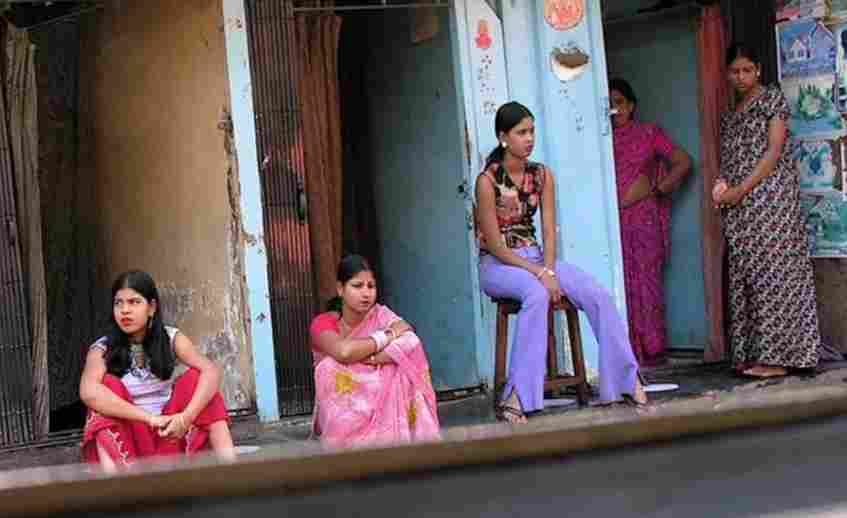
Sonagachi’s HIV/AIDS Intervention Programme or commonly known as SHIP was first launched in 1992 to educate sex workers about the potentially harmful side effects of this industry of selling bodies. SHIP evolved into an independent, community-based HIV intervention programme for sex workers in one of India’s most notorious red-light districts. The programme helped sex workers collectivise and unionise around a sex work identity, mobilise against harassment, and negotiate successfully with neighbourhood organisations to reduce their exposure to violence and HIV risk. It was originally conceived as an educational intervention in which trained sex workers would go door to door to discuss HIV among brothels in Sonagachi. The programme has grown to meet the needs of 20,000 sex workers in the community, including health clinics, a savings and banking cooperative that invests in community business enterprises, several schools for sex workers’ children, and a babu (long-term customer) group that assists clients in avoiding police harassment. These activities are currently being organised by the Durbar Mahila Samanwaya Committee (or Durbar), a sex workers’ organization that arose from the initial peer-based HIV intervention effort. Durbar’s largest HIV intervention programme, SHIP, is still in place.
The conditions of these brothels are not appreciable either. Congested lanes, small rooms, and smelly localities are affecting their health badly because of which problems related to their health are also arising. Diseases like cervical cancer, HIV and STD are increasing as no steps have been taken for their betterment. By one of the surveys, sex workers were experiencing debilitating stigma and discrimination that erodes their ability to protect their health and well-being. There are around 30-35 prostitutes living in a 100-yard house together and they have one washroom in their house. Their rooms are not even clean and the rooms are very small, much like there is only a space of a single bed in a room. There is not even a space of standing in that room. In present conditions also the conditions vary to types of a prostitute if we talked about escorts their living conditions are way better than that normal prostitutes.
Steps To Be Taken
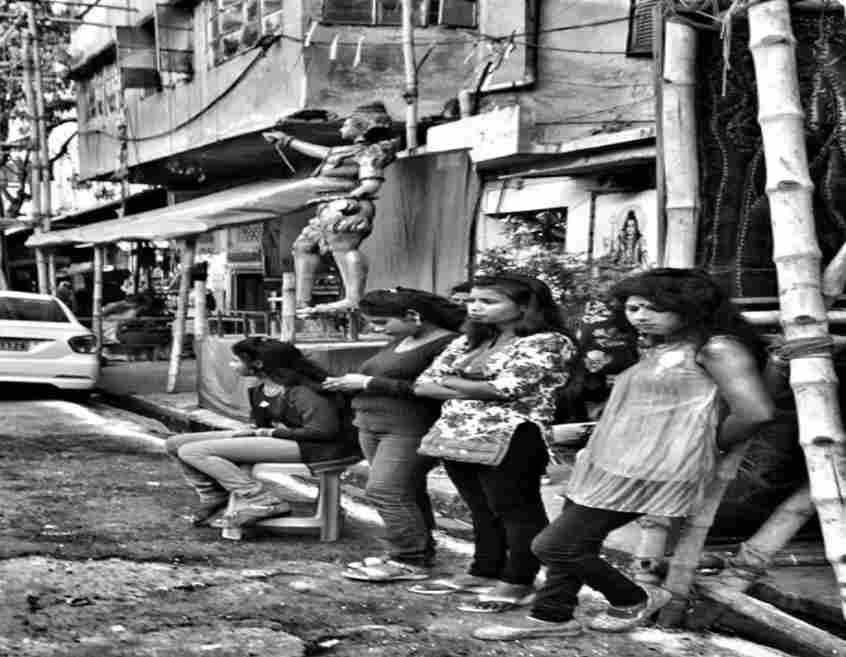
Committees can undertake a proper investigation with respect to the areas where prostitutes live and make recommendations for the improvement of these areas.
The legalization of this profession can also help in the betterment of their position in society and improve their surroundings as well as there will be a decrease in the ratio of human trafficking.
Awareness programs should be conducted to remove the stigma and maintain healthy relationships with mainstream society. In this way, they will be able to take aid from society.
By making laws with respect to the minimum payment that they should get, they will be able to improve their condition themselves if they are not exploited by the pimps. So laws should be made to prevent their exploitation.
Movies And Documentaries On Sonagachi
Tales of the Night Fairies– This is a documentary on the lives of the sex workers of Sonagachi Kolkata. However, it is not a story of pain or shame that we might want to think about hearing the name ‘Sex worker.’ This story vibrantly talks and shows about the lives of the sex workers who are normal human beings like us. The sex workers in this documentary are empowered under the Sonagachi sex workers association. The can negotiate with the local police on raids, fines, or any brutality meted out to them. This documentary will want you to question if prostitution should be legalized in India.
Born Into Brothels—Calcutta’s Red Light Kids- Born into Brothels: Calcutta’s Red Light Kids is a 2004 Indian-American documentary film about the children of prostitutes in Sonagachi, Kolkata’s red-light district. Briski, a documentary photographer, traveled to Kolkata to capture prostitutes in the film. She met their children while she was there and promised to teach them photography in exchange for being permitted to photograph their mothers. The children were given cameras in order for them to learn photography and potentially improve their lives. Their images represented life in the red light district through the perspective of youngsters who were typically disregarded and sworn off to perform housework until they could contribute more significantly to the family’s well-being. The filmmakers captured the courses as well as daily life in the red light district, and much of their work was included in the film. The children’s work was displayed, and one boy was even sent to an Amsterdam photography conference. Briski also documented her efforts to place the children in boarding schools, despite the fact that many of the youngsters did not stay in the schools for very long. Others, like Avijit and Kochi, not only continued their schooling but also received good grades. The discovery of ten-year-old Avijit, whose innate flair for generating intriguing compositions through the lens gained him an invitation to the World Press Photo Foundation in Amsterdam, is the film’s one success story.

In recognition of the sacrifices of the workers from Sonagachi, Sahir Ludhianavi has rightly written,
“Ye duniya do rangi hai,
Ek taraf se resham ode, ek taraf se nangi hai,
Ek taraf andhi daulat ki paagal aish parasti,
Ek taraf jismoñ ki qeemat roti se bhi sasti,
Ek taraf hai Sonaagaachi, ek taraf Chaurangi hai,
Ye duniya do rangi hai…“
Meaning:
“This world is double-faced,
One side covered with silk, the other naked,
On the one hand, the hedonism of blind wealth,
On the other, bodies sold cheaper than bread,
On the one hand lies Sonagachi, on the other Chowringhee,
This world is double-faced…“
How Can One Go There?
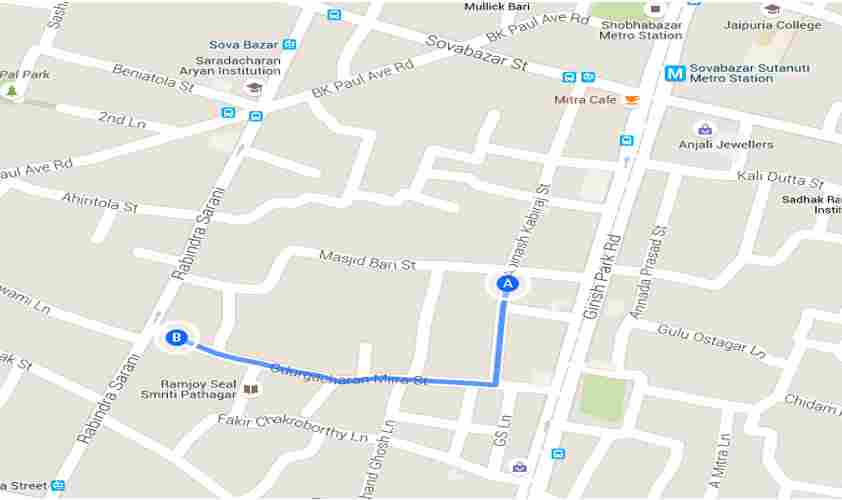
This question seems odd to the information provided above but just in case someone is really eager towards visiting the multi-storeyed buildings of Sonagachi to physically witness women standing in their balconies to adore and attract customers on their way. Sonagachi is located in North Kolkata near the intersection of Chittaranjan Avenue Sova Bazar and Beadon Street, just north of the Marble Palace. Previously there were many Bengali prostitutes in Sonagachi. But nowadays Rajasthani and Khamia-Nepalese prostitutes have gained in number.
Concluding Remarks
Sonagachi has become a hub for prostitutes and is known to every Indian, I believe. The debates on a prospective ban on such red-light areas have been common but instead of taking strict legal actions, the Government and the Debaters have tried to confine themselves with just logical arguments all ending with the same phrase “… Someday in the future!” This ‘Someday In the Future’ has now come! It is important for Government officials to understand that a two-way process is always dangerous. The country needs to demand on a national level to persuade the West Bengali Government to either completely ban these red-light areas or absolutely legalize it. The problems with having such two-way policy decisions are as follows:
Society has never tried to accept ‘Prostitution’ as a profession, due to which, sex workers are never allowed to enter society with a head held high. This again does not allow these sex workers to quit a profession, they themselves are not happy with.
Legally and practically, having pursued two different stances on a profession like this, not just disturbs the mental wellbeing of prostitutes but in some way, also influences the youth to visit these centers to practical experience such brothels physically. The youth tends to believe that running and using brothels are legal in India which not just influences the youth in a negative way but also facilitates their young nurturing brains to concepts like ‘Easy Money’ and ‘Selling the body to satisfy your needs.
Top 13 Interesting Facts About The Sonagachi
Sonagachi is believed to have 50,000+ active prostitutes working daily to attract customers and earn a livelihood for their children.
Sonagachi is alleged to be Asia’s Largest Hub for Prostitutes with more than 3000 prostitution centers running legally.
In Bengali, Sonagachi means ‘Tree of Gold’.
The book ‘Guilty without Trial’ by the founders of the NGO ‘Sanlaap’ based much of their research into human trafficking in India on this area.
Several NGOs and government organizations operate in Sonagachi for the prevention of sexually transmitted diseases (STD) including AIDS. One of such organizations is the Durbar Mahila Samanwaya Committee (DMSC).
The first prostitution center in this area was established by ‘The East India Company’.
Sonagachi is located in North Kolkata near the intersection of Chittaranjan Avenue Sova Bazar and Beadon Street, just north of the Marble Palace.
Sonagachi is the largest red-light district in Asia with more than 50,000 commercial sex workers.
The population of prostitutes in Sonagachi constitutes mainly Nepalese, Indians, and trafficked Bangladeshis women. Some sources estimate that are 30,000 Bangladeshi women in the brothels of Kolkata.
According to some sources, the most common form of trafficking consists in offering false promises or some offer of help out of a dead-end or crisis situation.
Neel Kamal, Prem Kamal, Ganga Jamuna, Night Lovers, and Dream House are the few famous premium brothels working in this area.
Kolkata has witnessed a surge in the numbers of sex workers in the last decade due to the growing inflation rates and the ever-increasing demand. The Law of Demand and Supply indicates that more the demand, the supply should be increased considerably too to keep the prices constant.
West Bengali Government has not imposed a blanket ban on the commercialization of brothels since it serves as a source of major revenue for the Government.
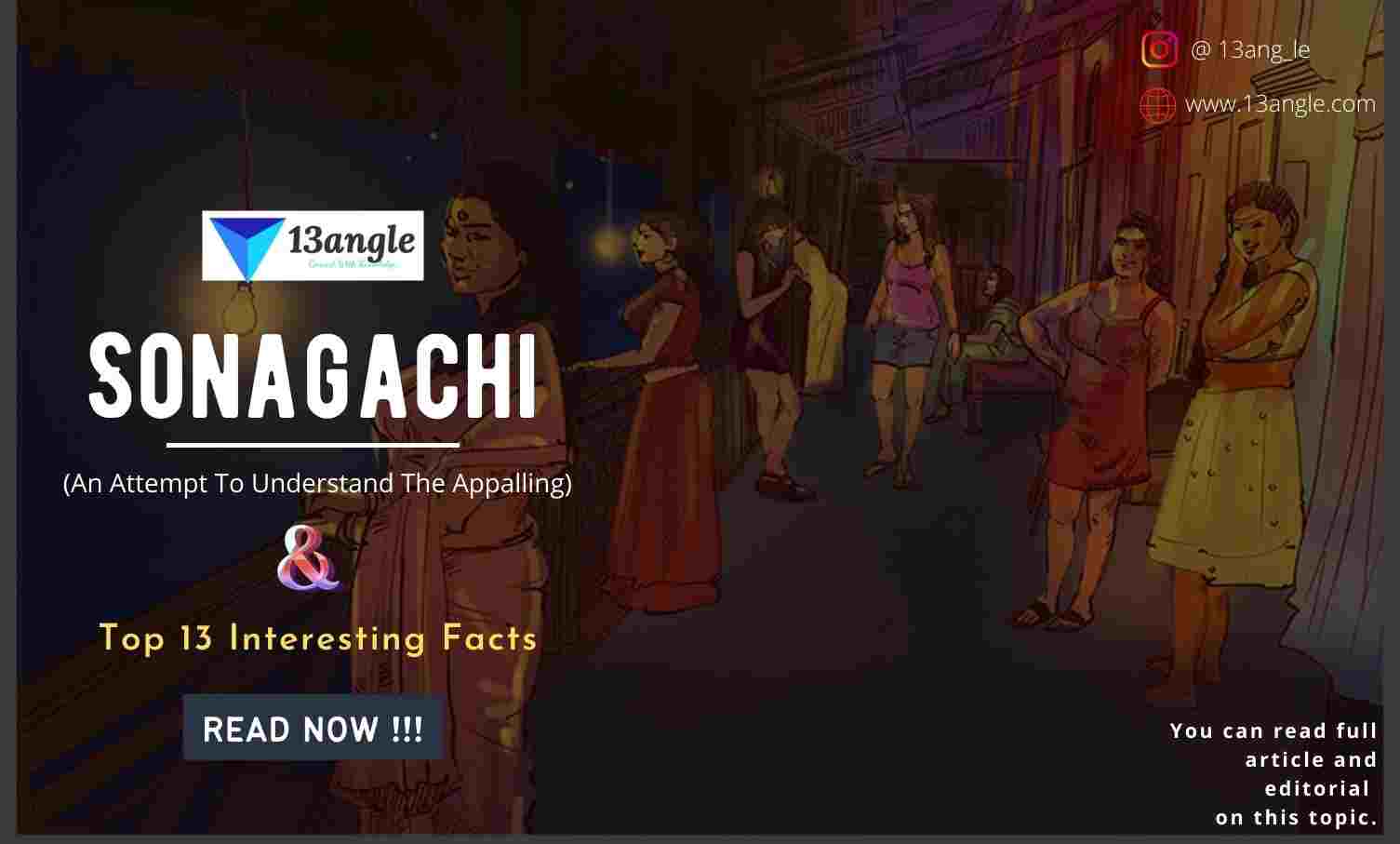
For deep details, you can read the full article. Click the link below :


